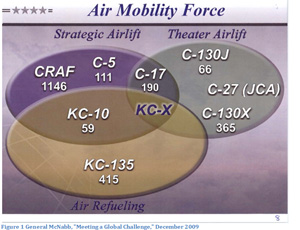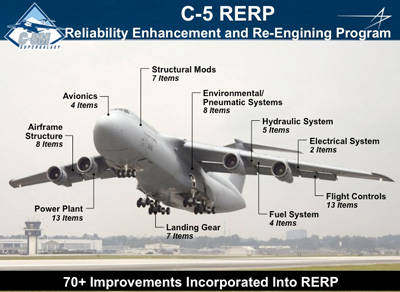The guided-missle cruiser USS Antietam (CG 54) fires a standard missile (SM-2) on the forecastle during a missle exercise for Multisail.
JAPAN
03.17.2018
Video by Petty Officer 2nd Class Sarah Myers
The guided-missle cruiser USS Antietam (CG 54) fires a standard missile (SM-2) on the forecastle during a missle exercise for Multisail.
JAPAN
03.17.2018
Video by Petty Officer 2nd Class Sarah Myers
Air Force CV-22s arrive at Naval Air Station North Island in San Diego, California during Exercise Emerald Trident on 14 January, 2019.
Emerald Trident is the largest joint special operations exercise where U.S. Special Operations Command forces train to respond to various threats across the spectrum of conflict.
NAVAL AIR STATION NORTH ISLAND, CA, UNITED STATES
01.14.2019
Video by Senior Airman Matthew Zakrzewski
The 455th Expeditionary Communications Squadron maintains base wide connectivity Jan. 8, 2019.
These personnel ensure that all forms communication are functional in order to aid in mission success.
AFGHANISTAN
01.12.2019
A C-5M Super Galaxy of the 433rd Airlift Wing, Lackland Air Force Base, Texas, shown on the Tinker AFB flight line after delivering outsized cargo to the Oklahoma City Air Logisitics Complex at Tinker AFB, Oklahoma, Jan. 4, 2019.
The aircraft and crew delivered parts to repair a damaged B-1B Lancer which were pulled from long-term open storage at Davis-Monthan AFB, Arizona.
OKLAHOMA CITY, OK, UNITED STATES
01.04.2019
72nd Air Base Wing Public Affairs
Of course, we would not be seeing this if the C-5 had not been upgraded to the M variant.
At the time when the support for the upgrade of the C-5 was being contested, we wrote a piece on why this program made sense for the USAF and DoD.
This is what we published 9 years ago.
1/12/2010 An effective and flexible multi-mission capability is central to the strategic future of the United States.
As the US engages in specific military or security campaigns, undoubtedly investments will have to be made on capabilities designed for specific operations.
These specific or tailored solutions meet only a significantly limited range of problems and will be paid for to facilitate mission success. The MRAP is one example of a tailored solution made for a specific conflict. One military thinker highlights the perils of such limited investment: “After having bought 16,000 MRAPs, the Army and Marines have decided the vehicle is too large to maneuver off-road and in confined areas … so the 2010 defense bill appropriates $6.3B for new lightweight Mine Resistant Ambush Protected All Terrain Vehicles (M-ATVs) – of which the Department of Defense plans to acquire 6,600.”

These acquisitions are necessary to adapt to specific operations. However, politicians then confuse such expenditure with investing in an appropriate multi-mission force. It isn’t. Such expenditures are being made for relatively single purpose efforts, and come at the expense of investments in multi-purpose systems.
The United States needs to build and sustain a multi-mission force with global reach in order to remain a global power. Not necessarily a superpower in terms of being able to dictate outcomes throughout multiple areas of the world; but in terms of bringing capabilities to regional situations so that allies might meet their own objectives in conformity with perceived US strategic interests and thus remain allied to the United States. Regional engagements are always born of political compromise but for the US to influence and shape events – even if only partial – it needs to operate over the tyranny of distance. To do so requires air and naval power with a global reach.
A key element for such operations is airlift. Airlift is expensive to operate but is the single most effective element in rapidly bringing ground and air assets into play to influence events.
The US has built a mixed fleet of C-130s, C-17s, and C-5s to provide for this capability. Such a fleet requires significant tanking or air bridge capability.
The C-5 represents a unique strategic capability. In terms of load and range, the C-5 provides a significant capability to support global operations. The aircraft opens from both ends allowing more rapid exit and entry of military assets. The aircraft also carries both passengers and platforms and can transport fully equipped forces for rapid insertion operations. In other words, the C-5 provides a significant contribution both for multi-mission operations and rapid insertion ops.
The multi-mission aspect of the C-5’s capability is two-fold.
The ability to bring significant insertion force capability to a strategic or tactical situation is unique in the US airlift fleet. When the US is not considering a full-scale military engagement in support of an operation but instead wishes to insert forces for a short duration, the C-5 provides a unique capability.
The C-5M is a product of the confluence of two modernization efforts.
First, the Avionics Modernization Program (AMP) provides a new cockpit, including several flight safety enhancements and upgrades, which allow it to operate in modern civil space. The modernized C-5 has data links to connect with air traffic control. These links allow reduced separation of aircraft so they can operate in regulated air space. By being able to access optimized air traffic control routes, the C-5M gains fuel savings, time, and can operate at longer distance.
Second, the Reliability Enhancement and Re-Engining Program (RERP) updates 70 subsystems of the aircraft. The centerpiece of the RERP is a new General Electric engine, which is used worldwide on civil aircraft and is also found on Air Force One and KC-10 tankers. This allows access to GE’s worldwide engine system in offline locations.

In addition to the life cycle cost savings, this upgrade yields new capabilities – leveraged modernization – which allows it to shrink the tanker gap.
As already noted, the C-5M can operate in civil airspace due to the avionics upgrades, which allows it to fly more efficient routes. The range of the aircraft allows it to avoid re-fueling en route (as compared to C-130s or C-17s), which means one needs fewer tankers and less en route tanking infrastructure (notably en route air fields).
Due to the significant range and reduced air bridge requirements coupled with enhanced lift capabilities and improved reliability, the C-5M can turn around much more rapidly and depart the arrival point. As a result the C-5M can lead to significant increases in the frequency of materiel deliveries. With fewer aircraft required, fuel requirements are reduced at the austere airfield.
Additionally, the modernized C-5Ms provide significant contributions to dealing with strategic uncertainty. The US will clearly need insertion forces able to operate worldwide in very time constrained environments for humanitarian or military missions. The C-5Ms will be able to carry significant or heavy loads over long distance, which provides for either longer range for C-17 sized loads or simply bigger, bulkier, or heavier loads.
The increased reliability of the C-5M will allow the Air Force to use the C-5 on more austere runways. The C-5 has significant capability to land in austere runways; with the new systems it can be considered a core contributor to this capability. The airplane has a landing gear footprint (LCN landing classification number) lower than the C-17 and comparable with the C-130, which allows the aircraft to operate on soft semi-prepared runways.
This inherent capability allows you to go beyond how the service currently uses the aircraft. Improved reliability from modernization means the tactical use of the C-5M can be expanded. In other words, by modernizing the C-5, the C-5M will be able to reliably carry more cargo over longer distances and with less air refueling tanker dependency.
The C-5M delivers 22% more power, provides 58% faster climb rate, and 8 to 20% better fuel economy, depending upon the operational scenario. In addition, the C-5M can expand its operations into airfields with shorter runways, thereby expanding its operational utility.
The C-5 can also contribute to new requirements, such as in support of AFRICOM.
The C-5M can operate from Ramstein to cover the entire African continent in support of AFRICOM and NATO operations.
This capability allows support for humanitarian, security, or military operations throughout the entire operational area.
In short, the C-5M provides a unique national strategic capability at affordable cost and represents an opportunity for the US to strengthen its multi-mission assets. While the C-5M is useful in support of Iraq and Afghanistan, it should not be viewed as limited to support of the today’s current operations. It is an investment in today and a foundation for tomorrow.
Watch as Pre-Commissioning Unit (PCU) Michael Monsoor (DDG 1001) transits the Panama Canal from Gatun Lake to Balboa Harbor.
PANAMA
11.28.2018
Video by Lt. Robert Reinheimer
The Royal Australian Air Force has deployed a contingent of approximately 370 personnel to Nellis Air Force Base in Nevada for Exercise Red Flag 19-1, taking place from 22 January to 15 February 2019.
Up to 6 F/A-18A Hornet aircraft from Number 77 Squadron, an E-7A Wedgetail from Number 2 Squadron, an AP-3C (Electronic Warfare) Orion from Number 10 Squadron have been deployed on the complex, multi-nation exercise. Personnel will also be operating a Task Group Headquarters; augmenting the Combined Air Operations Centre, Cyber capabilities; and establish a Control and Reporting Centre.
Established in 1975 as an internal exercise by the United States Air Force, Exercise Red Flag centres on the world’s most complex reconstruction of a modern battlespace and is recognised as one of the world’s premier air combat exercises. Red Flag 19-1 also involves participants from the United States Navy as well as the Royal Air Force.
Training alongside allied nations is critical to the success of Air Force units on real world operations; helping develop further familiarity with foreign terminology, methods and platforms.
Australian Department of Defence
February 6, 2019
The Australian Defence Force assisted Coles and Woolworths supermarkets in the delivery of urgently needed fresh product and household items to flood ravaged North Queensland.
Due to these extreme weather conditions and unprecedented rainfall, it was difficult for the road and rail movement of groceries.
Approximately 70 tonnes of produce and essential items were loaded and flown from RAAF Amberley in Brisbane to Townsville via Air Movements personnel and three Royal Australian Air Force C-17A Globemaster aircraft to replenish stores in areas with exhausted stock.
Australian Department of Defence
February 8, 2019
An Italian AV-8B Harrier takes off from the flight deck of the Wasp-class amphibious assault ship USS Kearsarge (LHD 3).
Kearsarge is on a scheduled deployment as part of the Kearsarge Amphibious Ready Group in support of maritime security operations, crisis response and theater security cooperation, while also providing a forward naval presence.
MEDITERRANEAN SEA
01.03.2019
Video by Petty Officer 2nd Class Ryre Arciaga